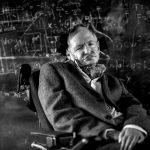The Internet consists of an infinite amount of knowledge, and it is through purposeful research combined with hypermedia integration that we are able to navigate it. As I have come to learn, the role hypermedia plays within navigation is immense, and is an integral component to our learning and online experience, as aptly described by Cope and Kalantzis:
Reading the screen requires considerable navigational effort. Today’s screens are designed for many viewing paths, allowing for diverse interests and subjectivities amongst viewers, and the reading path they choose will reflect the considerable design effort the viewer has put into their reading. In fact, the commonsense semantics is telling—“readers” of books have become “users” now that they are on the web. (Cope & Kalantzis, 2009, p. 181)
Additionally, hypermedia reflects the nature of the human mind due to the fact that we naturally think associatively and not linearly (Bolter, 2001, p. 26). It is interactive, nonlinear, multimedia, and fluid rather than fixed (Dobson, 2009, p. 6). This characterization describes the human stream of consciousness within psychology and reminded me of Virginia Woolf’s novel Mrs. Dalloway, in which it is used as a narrative mode and each scene closely follows a character’s thoughts moment to moment. Through hypermedia, we are similarly able to, as users, navigate to and from information on different web pages as dictated by our own streams of consciousness in real time. Bolter says that if we think of hypertext spatially, “the links constitute a path through a virtual space and the reader becomes a visitor or traveler in that space” (2001, p. 21). I wholly agree with this statement, for if we did not have a guiding pathway of sorts, there would be too much information for our minds to assimilate and we would be lost and without direction whilst using electronic media (p. 23).
Thanks to hypermedia, Internet users can enjoy ‘surfing the Internet’, by starting at one point of interest and ending up at somewhere entirely different. Throughout the journey, users can discover new information and learn by further exploring areas of interest, while skipping over information that is already known, irrelevant, or not of interest. The beauty of associative thinking and multidirectional text via hypermedia is that the order of thoughts and ideas is not sequential or bound. This allows for users to explore uncharted areas of the Internet, exposing themselves to new and different ways of thinking and understanding the world – both in a physical and virtual sense. It is interesting to note, however, that Dillon (1996), as cited by Dobson, has raised the valid argument that a given hypertext may not mimic or facilitate associative thinking for anyone save the author of that hypertext (Dobson, 2009, p. 7).
Hypermedia in Education
In moving from static printed text to multimodal electronic text, however, the question is how this shift has affected education. What does it mean for learning and comprehension, as well as reading, text value, and creative processes? George Landow proposes that:
Hypermedia revolutionizes education by freeing students from teacher-centred classrooms, promoting critical thinking, empowering students, easing the development and dissemination of instructional materials, facilitating interdisciplinary work and collaboration, breaking down arbitrary and elitist textual barriers by making all text worthy and immediately accessible, and introducing students to new forms of academic writing. (Landow 1997, p. 219ff as cited in Dobson, 2009, p. 7)
When utilized to its fullest capacity, hypermedia can modify and extend literacy practices by improving comprehension and motivation by mimicking the associative processes of the mind (Dobson, 2009, p. 7). A positive example I observed of one of my students occurred during art class one day when that student used the iPad to think of ideas for an art project I had assigned to the class. The student searched up “line art examples” on Google Images and came across a black and white geometric image that stood out to him. He was so fascinated by it that upon clicking the link, he learned it was an example of Op Art (Optical Illusion Art). Upon clicking yet another link featuring an assortment of Op Art examples, he was able to find inspiration for his project, and also learned about an art genre he had never known about previously. In this case, a student’s curiosity resulted in self-learning that did not require teacher prompting whatsoever. Hypermedia made the information readily available and accessible to him and empowered him to find the answers to his questions by himself.
Alternatively, however, associative thinking might also have no effect upon improving comprehension or learning. While hypermedia may provide direct access to relevant and useful information, it may also direct to irrelevant, useless, or unvetted (false) information. Additionally, multidirectional text networks that promote associative thinking may result in user disorientation, affecting productivity and staying on task. This is all too relevant, as I often find myself on YouTube looking for teaching ideas and inspiration. I’ll start by clicking on a few linked ‘recommended videos’, and then later find myself watching some completely irrelevant video from that strange part of YouTube. As mentioned earlier, this can be extremely enjoyable when leisurely surfing the web but is also a huge distraction when trying to be productive and focused. Like many other issues discussed during this program regarding technology usage from an educational standpoint, I can only conclude that while hypermedia provides users with many positive learning benefits, it is only in a controlled and regulated environment that these benefits can prove fully effective.
References
Bolter, Jay David. (2001). Writing space: Computers, hypertext, and the remediation of print [2nd edition]. Mahwah, NJ: Lawrence Erlbaum.
Cope, B., & Kalantzis, M. (2009). “multiliteracies”: New literacies, new learning. Pedagogies: An International Journal, 4(3), 164. doi:10.1080/15544800903076044
Dillon, A. (1996). Myths, misconceptions, and an alternative perspective on information usage and the electronic medium. In J. F. Rouet, J. J. Levonen, A. Dillon, & R. J. Spiro (Eds.), Hypertext and Cognition (pp. 25-42). Mahwah, NJ: Lawrence Erlbaum.
Dobson, T.M. and Willinsky, J. (2009). Digital Literacy. In David Olson and Nancy Torrance (Ed.), Cambridge Handbook of Literacy, pp. 286-312. Cambridge: Cambridge University Press.
Landow, G. P. (1997). Hypertext 2.0: The Convergence of Contemporary Critical Theory and Technology (Revised ed.). Baltimore: Johns Hopkins University Press.



george backhouse
August 10, 2018 — 12:43 pm
I really enjoyed reading your response. I would like to comment on the first part. This is where you speak to the associative nature of hypertext linking. I agree that hypertext linking more closely resembles the human thought process. It is for this reason that hypertext linking allows the reader to stay engaged on the internet for hours at a time, particularly while conducting research. Personally, I have enjoyed allowing myself to be whisked down the path my own research takes me. And I am often surprised at how far I have allowed myself to be carried from my point of departure.
I believe that it is this very feature of hyperlinking that makes it both advantageous and disadvantageous, particularly to the researcher. On the one hand, it allows for unprecedented exploration and discovery (as you mention). A reader or researcher is able to embark from any point and follow a series of links which may open to him or her an entire new branch of inquiry. In this sense, hypertext linking greatly enhances the associative nature of human cognition. It also allows the researcher to tap into his curiosity and explore at his or her convenience.
On the other hand, by giving his associative cognition “free reign”, the researcher may end up (as have I on many occasions!) far removed from where he or she set out. In this respect, the researcher may experience some difficulty finding a logical path back to his or her starting point. I believe that this is one feature of that Ted Nelson (2007) felt was missing from modern text technology. Amongst others, he proposed a significant modification namely, a feature that allows one researcher to “track” the research path of another.
(Word count: 287)
References
Nelson, T. (2007, January 29). Transclusion: Fixing Electronic Literature [Video file]. Retrieved from https://www.youtube.com/watch?v=Q9kAW8qeays
benson chang
August 19, 2018 — 1:41 am
Hi Stephanie. I enjoyed your view on the effects of hypermedia in education. I think this is a crucial conversation to have as we shift towards a student centered, inquiry based pedagogy. Ideally, the hypermediated resources that students now have access to will lead to freethinkers who will take advantage of the ease of access have the drive to explore the multimodal resources available. These students do exist, but in my experience, they are not the norm. The majority of the students have no developed an increased level of associated thinking.
My experience could very well be chalked up to transitional effect of a pedagogical paradigm shift, but I feel there is a more prominent factor. Hypertext is a heavily utilized aspect of the web, and is in fact, a crucial component of what makes the web so powerful. However, hypertext can be messy. For one, the effectiveness of hypertext is heavily reliant upon the creator. For example, a Wikipedia article for which every word is hyperlinked is arguably just as ineffective as one that has no hyperlinks. Another issue is that associated thinking is developed through active practice, which means the creators of the resources benefit from the linking exercise, but the consumers do not necessarily learn to associate for themselves. For a consumer, to practice associated thinking from following hyperlinks, requires active thought into the reasons and intent behind the links. A creator focused on helping students learn will use hypertext very differently from one who is primarily focused on selling.
Aside from potentially questionable intent, instead of encouraging exploration, even in the best case scenarios exuberant use of hypertext distracts. How so? It comes down to the idea of six degrees of separation. When people can have fun on Wikipedia with the game of “six degrees to Kevin Bacon”, it is a sign that the very idea of hyperlinking is flawed in an uncontrolled environment. Furthermore, our most common interface into the digital world is flawed at least for reading purposes. For most people, their screen is set in landscape mode, meaning it is wider than it is tall. This is great for video purposes which seek to show a wider, more inclusive environment for immersion purposes, but is worse for reading purposes, which is more efficiently read through portrait setup. In the hypermedia filled digital world, written work tends to still follow the traditional portrait look, which tends to mean that all the rest of the real estate on the side of the main work is filled with ads and other distractions.